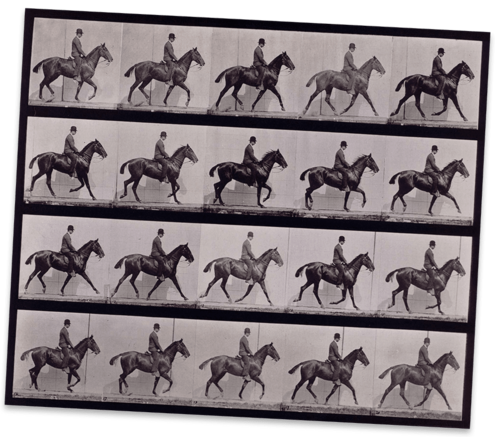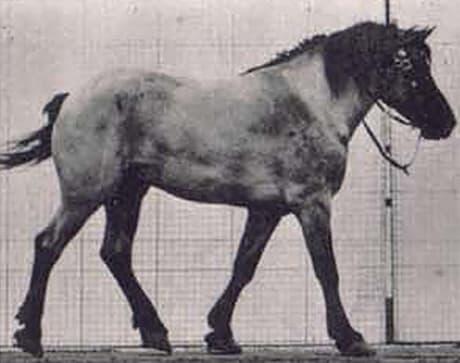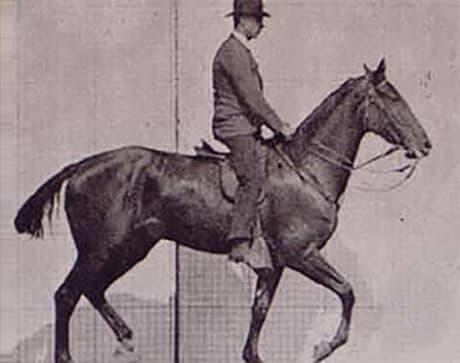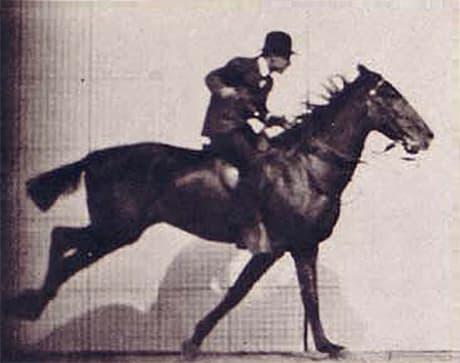Horse Gaits Flipbooks
Walk, Trot, and Gallop!

People can walk, skip, and run. But with four legs, horses can move in even more different ways, called gaits. They naturally walk, trot, canter, and gallop, depending on how fast they need to move.
Every gait has a distinctive pattern, with one or more hooves leaving the ground at a time. For years, people could only guess at the leg patterns for faster gaits. Then in the 1870s, British photographer Eadweard Muybridge solved the mystery by "freezing" the movement of a horse in a series of photographs of different gaits.
How many hooves of a trotting horse leave the ground at the same time? What about a walking horse or a galloping horse?
Find out by making flipbooks of each gait with Muybridge's famous photographs.
What You'll Need
- thick string or shoelace
- hole puncher
- scissors
- light cardstock

The Walk Flipbook (PDF)
Walking uses much less energy than the other gaits but limits how fast a horse can go. Look closely at the pictures of the horse walking. Are its four legs ever off the ground at the same time?

The Trot Flipbook (PDF)
Until the 1870s, no one was sure whether all the hooves of a trotting horse left the ground at once. Look closely at the fifth picture in the sequence. What can you tell?

The Gallop Flipbook (PDF)
In the gallop, four hooves leave the ground at the same time, when the horse's hind legs swing near the front legs. Look closely at pictures 6 to 10. How are the four legs positioned? Before Muybridge's photographs, galloping horses were often shown flying through the air with all four legs outstretched! That, of course, never actually happens.
What To Do

Print out PDFs on light cardstock. (Regular printer paper is too flimsy.)

Cut out each flipbook page along dotted lines.

Punch holes in the places marked "X".

Stack the pages by number with page 1 on top.

Place the cover page on top of stack.

Thread the piece of string through both holes and tie the ends together to make a book.

Hold the book with your left hand and flip through the pages with your right thumb. Watch how the horse moves.
Image Credits:
All photos: Eadweard Muybridge




 Biodiversity
Biodiversity
 Brain
Brain
 Genetics
Genetics
 Marine BiOLogy
Marine BiOLogy
 MicrobiOLogy
MicrobiOLogy
 PaleontOLogy
PaleontOLogy
 ZoOLogy
ZoOLogy
 AnthropOLogy
AnthropOLogy
 ArchaeOLogy
ArchaeOLogy
 Astronomy
Astronomy
 Climate Change
Climate Change
 Earth
Earth
 Physics
Physics
 Water
Water
